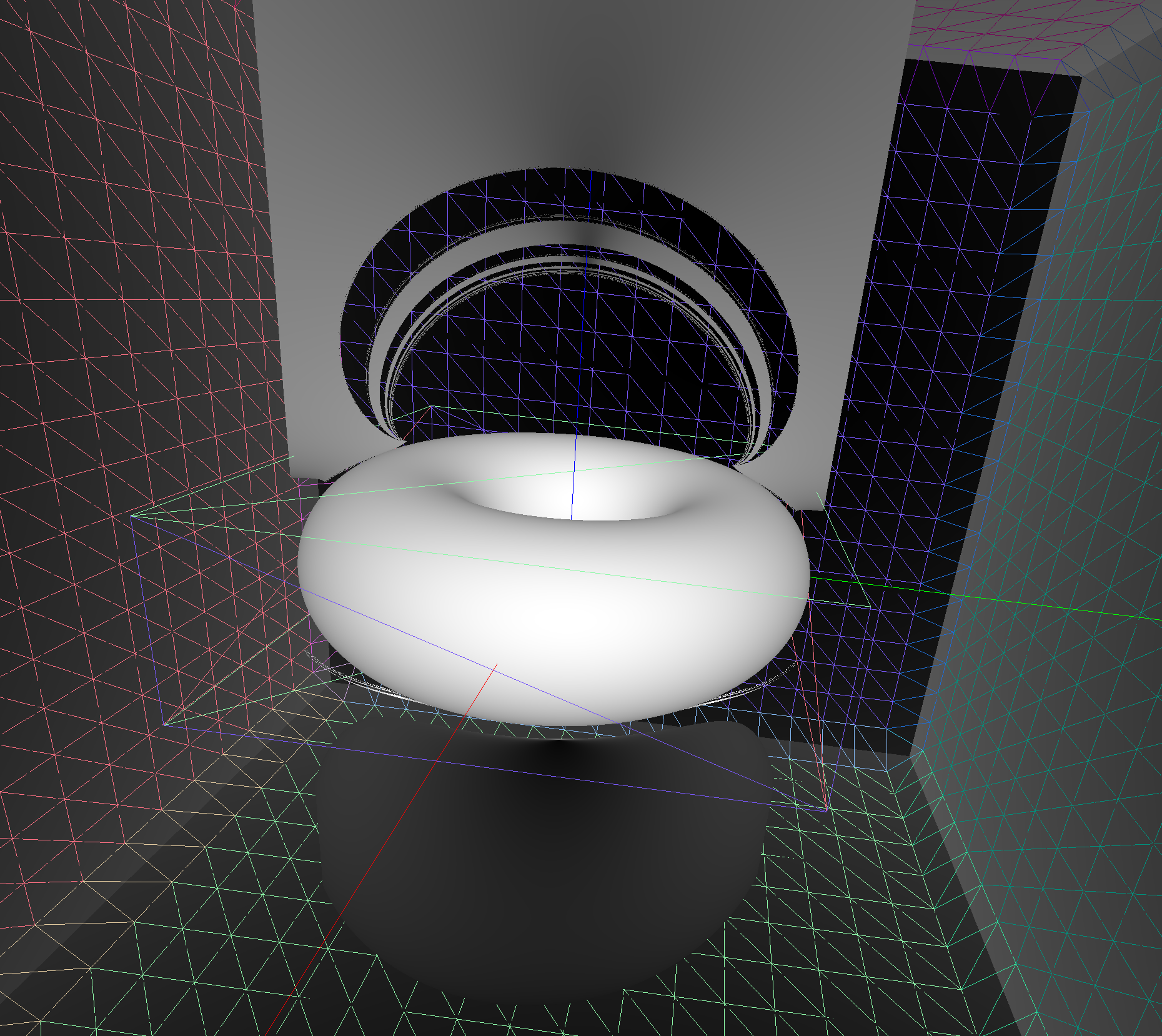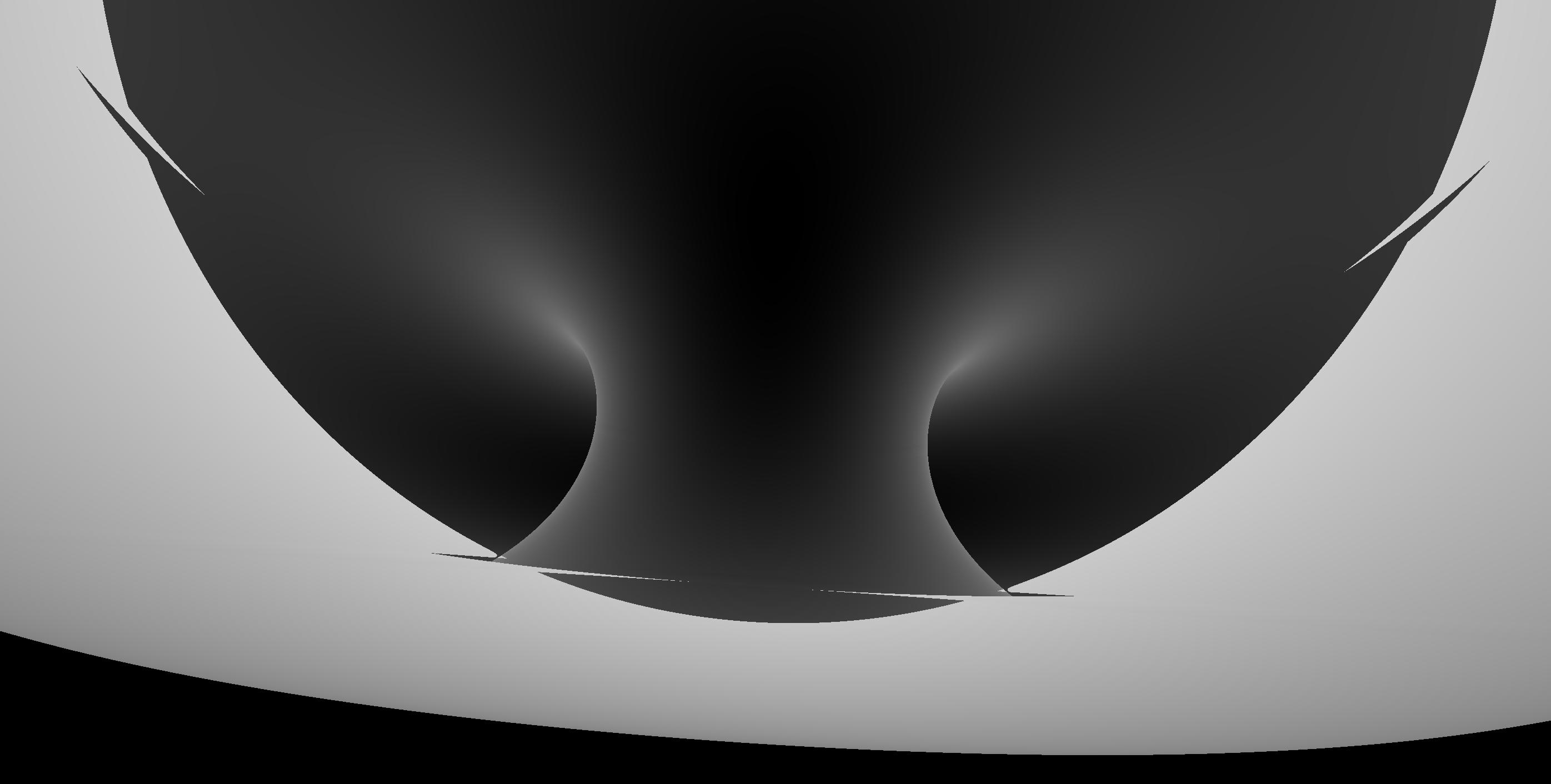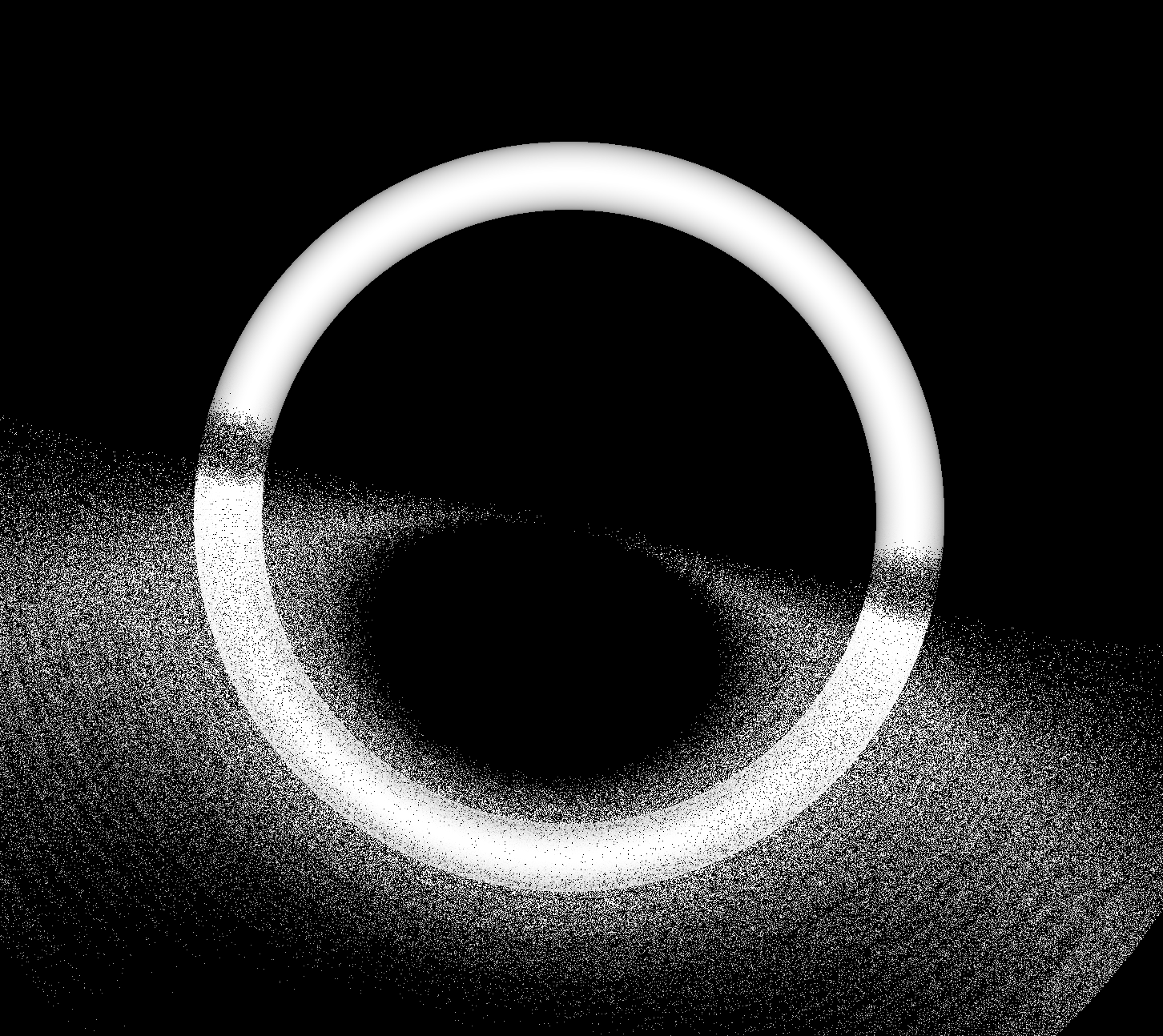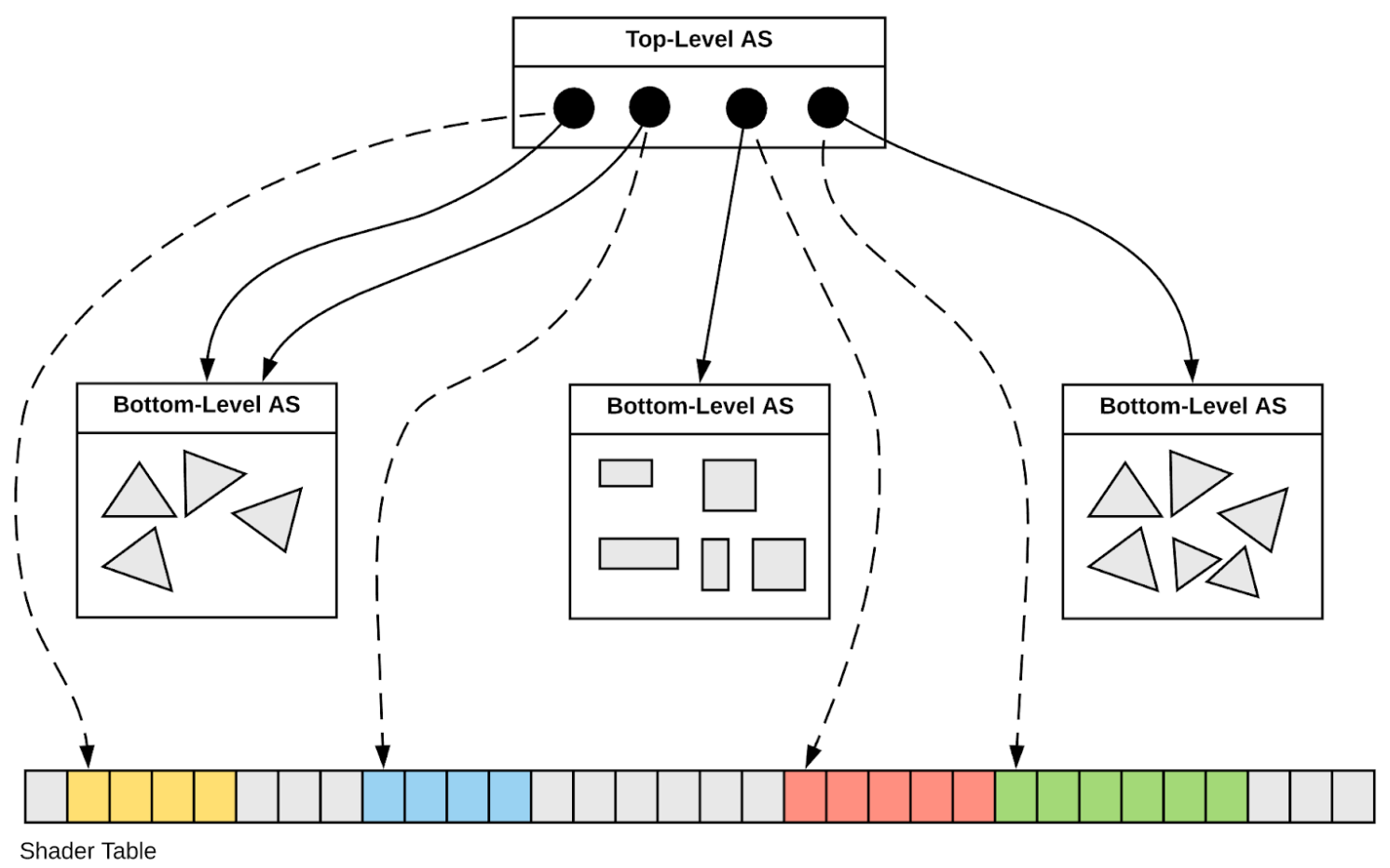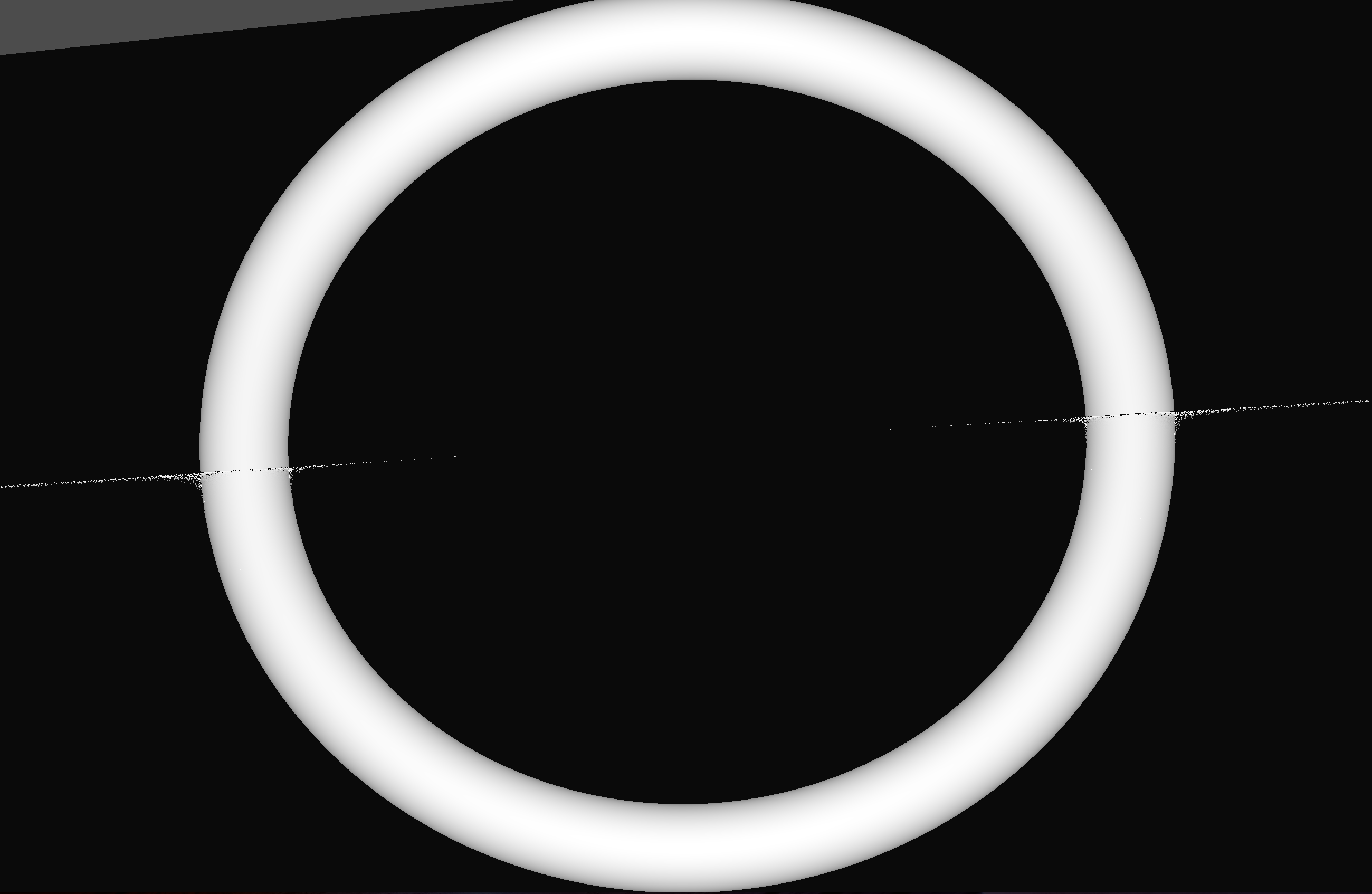Detector Geometry in Opticks
Detector Geometry in Opticks :
GPU Optical Simulation with NVIDIA® OptiX™
Open source, https://bitbucket.org/simoncblyth/opticks
Simon C Blyth, IHEP, CAS — Compute Accelerator Forum Meeting, March 10 2021, Virtual
Outline
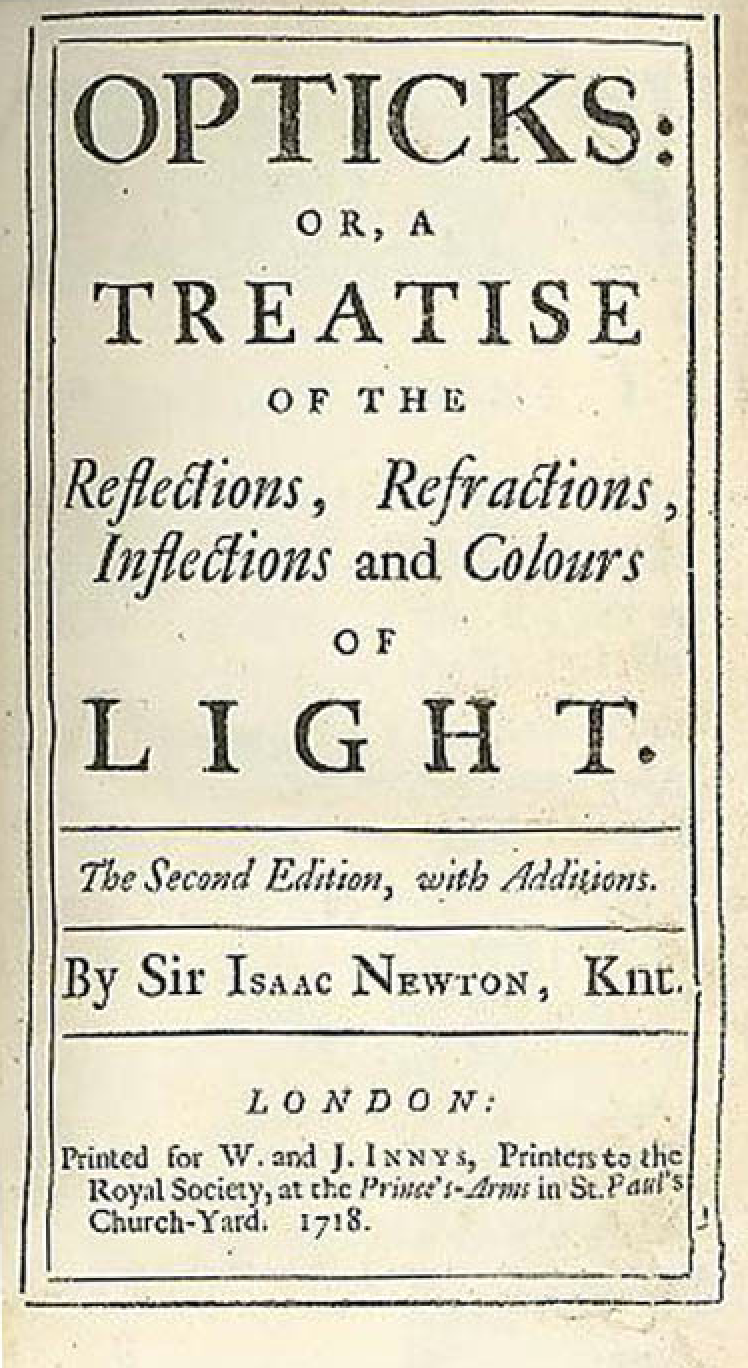
- Introduction
- JUNO Optical Photon Simulation Problem...
- NVIDIA Marbles at Night : RTX Demo ; NVIDIA Ampere : 2nd Generation RTX
- GPU Ray Tracing APIs Converging
- RTX Execution Pipeline : Common to DirectX RT, VulkanRT, NVIDIA OptiX
- Spatial Index Acceleration Structure
- Two-Level Hierarchy : Instance transforms (TLAS) over Geometry (BLAS)
- Opticks : Structural Geometry
- Geant4 + Opticks Hybrid Workflow
- NPY Serialization : Fundamental to Opticks Geometry Model ; NumPy Example
- Translation 1st Step : Geant4 -> Opticks/GGeo : 1->1 conversions
- Translation 2nd Step : Opticks/GGeo Instancing : "Factorized" Geometry
- Ray Intersection with Transformed Object -> Geometry Instancing
- OpenGL Mesh Instancing ; OptiX Ray Traced Instancing
- Opticks Solids : CSG, Constructive Solid Geometry
- G4VSolid -> CUDA Intersect Functions for ~10 Primitives
- G4Boolean -> CUDA/OptiX Intersection Program Implementing CSG
- (CSG details relegated to "Extras")
- Opticks Material/Surface Properties : Boundary Texture
- Opticks vs Geant4 : Extrapolated G4 times compared to Opticks with RTX ON/OFF
- Overview + Links
Outline Extras

- Opticks Solids : CSG, Constructive Solid Geometry
- Constructive Solid Geometry (CSG) : Shapes defined "by construction"
- CSG : Which primitive intersect to pick ?
- CSG Complete Binary Tree Serialization -> simplifies GPU side
- Evaluative CSG intersection Pseudocode : recursion emulated
- CSG Deep Tree : JUNO "fastener"
- CSG Deep Tree : height 11 before balancing, too deep for GPU raytrace
- CSG Deep Tree : Positivize tree using De Morgans laws
- CSG Deep Tree : height 4 after balancing, OK for GPU raytrace
- CSG Examples
- Torus : much more difficult/expensive than other primitives
- Torus : different artifacts as change implementation/params/viewpoint
JUNO Optical Photon Simulation Problem...
Huge CPU Memory+Time Expense
- JUNO Muon Simulation Bottleneck
- ~99% CPU time, memory constraints
- Ray-Geometry intersection Dominates
- simulation is not alone in this problem...
- Optical photons : naturally parallel, simple :
- produced by Cherenkov+Scintillation
- yield only Photomultiplier hits
NVIDIA Marbles At Night RTX Demo
NVIDIA Marbles At Night RTX Demo 2
Realtime RTX render, 1 Ampere GPU
https://www.youtube.com/watch?v=NgcYLIvlp_k
- playable demo : guide marbles thru geometry
- purely path-traced, no rasterization, no baking
- hundreds of dynamic ray-traced lights
- ~100M polygons
- AI : DLSS + denoising
- 1440p @ 30fps on single Ampere GPU :
NVIDIA GeForce RTX 3090 [USD 1499]
2560*1440 = 3.7M pixels -> x30 -> 110M pixels/s
DLSS : Deep Learning Super Sampling
Ampere : 2nd Generation RTX
- NVIDIA:
- "...triple double over Turing..."
- Samsung 8nm (from TSMC 12nm)
- NVIDIA GeForce RTX 3090
- 10,496 CUDA Cores, 28GB VRAM
GPU Ray Tracing (RT) APIs Converging
Interfaces over NVIDIA Driver
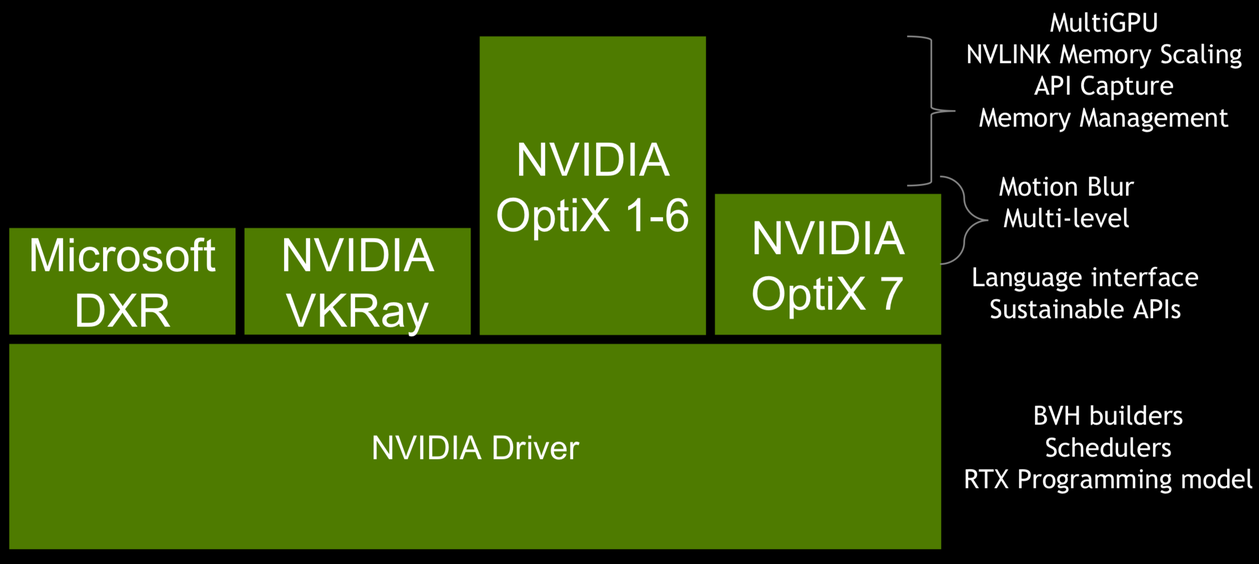
Driver Updates : Independant of Application
- new GPU support
- performance improvements
Three Similar Interfaces over same RTX tech:
NVIDIA OptiX (Linux, Windows) [2009]
- CUDA header only access to Driver functionality
Vulkan RT (Linux, Windows) [final spec 2020]
- cross-vendor cross-platform RT
Microsoft DXR : DirectX 12 Ray Tracing (Windows) [2018]
- enhancing visual quality of realtime games
Metal Ray Tracing API (macOS) [introduced 2020[1]]
- Very different Integrated GPU : Apple Silicon M1 GPU
- BUT: similar API
[1] https://developer.apple.com/videos/play/wwdc2020/10012/
RTX Execution Pipeline : Common to DirectX RT, Vulkan NV RT, OptiX
Acceleration Structure (AS) traversal is central to pipeline performance
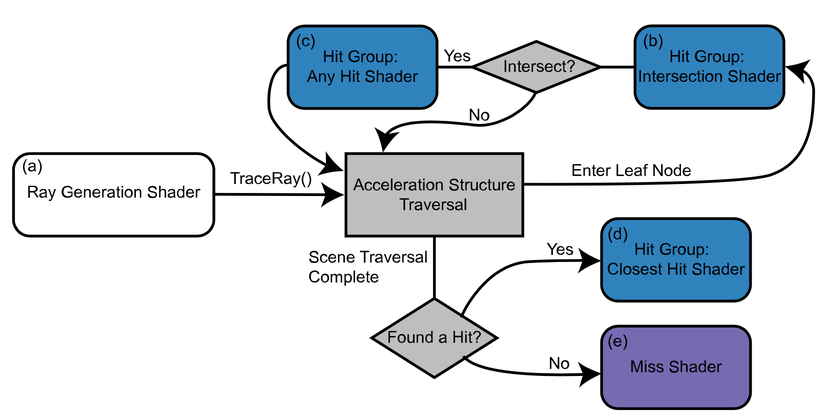
"The RTX Shader Binding Table (SBT) Three Ways", Will Usher
RG : Ray Generation
IS : Intersect
CH : Closest Hit
AH : Any Hit
MS : Miss
GPU Opticks
- RG
- CerenkovScintillation"bounce" loop
- IS
- primitives, CSG
- CH
- IS->RG
Spatial Index Acceleration Structure
Tree of Bounding Boxes (bbox)
- aims to minimize bbox+primitive intersects
- recursively partitions space
Two-Level Hierarchy : Instance transforms (TLAS) over Geometry (BLAS)
OptiX supports multiple instance levels : IAS->IAS->GAS BUT: Simple two-level is faster : works in hardware RT Cores
- AS
- Acceleration Structure
- TLAS (IAS)
- 4x4 transforms, refs to BLAS
- BLAS (GAS)
- triangles : vertices, indicescustom primitives : AABB
- AABB
- axis-aligned bounding box
SBT : Shader Binding Table
Flexibly binds together:
- geometry objects
- shader programs
- data for shader programs
Hidden in OptiX 1-6 APIs
Geant4OpticksWorkflow
NPY Serialization : Fundamental to Opticks Geometry Model
NPY Serialization Benefits
- simple standard .npy file format[1] : hdr + arr
- flexible load from file and test
- network transport : distributed production
- NumPy/IPython debug/analysis eg:
a = np.load("transforms.npy")
Arrays for Everything -> direct access debug
- (num_photons,4,4) float32
- (num_gensteps,6,4) float32
- (num_csgnodes,4,4) float32
- (num_transforms,3,4,4) float32
- (num_planes,4) float32
- ...
read/write/stream NumPy arrays from C++
- NP.hh : header-only implementation
- https://github.com/simoncblyth/np/
- Separate address space -> cudaMemcpy
- upload/download : host(CPU)<->device(GPU)
- Serialize everything -> Arrays
- Thread order undefined -> Arrays
- (each CUDA thread "owns" slots in the array)
Array-oriented : separate data from compute
- inherent serialization + simplicity
- avoid object serialization/de-serialization
- scales well to millions of element systems
Opticks/NPY pkg : Array Interface Using glm::mat4 glm::vec4
Opticks/GGeo classes implemented with NPY arrays
- all geometry objects persistable -> geocache
- some can be concatenated : GMesh, GParts
- No dependency on Geant4
[1] http://www.numpy.org/neps/nep-0001-npy-format.html
Persist NumPy Arrays to .npy Files from Python, Examine File Format
Load NumPy array into C/C++
Straightforward to parse NPY files
http://github.com/simoncblyth/np/
NP::Load
- parses file header, array shape + type
- reads array data into std::vector
// gcc NPMinimal.cc -lstdc++ && ./a.out /tmp/a.npy
#include "NP.hh"
int main(int argc, char** argv)
{
assert( argc > 1 && argv[1] ) ;
NP* a = NP::Load(argv[1]) ;
a->dump();
return 0 ;
}
IPython persisting NumPy arrays:
In [1]: a = np.arange(10) # array of 10 long (int64)
In [2]: a
Out[2]: array([0, 1, 2, 3, 4, 5, 6, 7, 8, 9])
In [3]: np.save("/tmp/a.npy", a ) # serialize array to file
In [4]: a2 = np.load("/tmp/a.npy") # load array into memory
In [5]: assert np.all( a == a2 ) # check all elements the same
IPython examine NPY file format:
In [6]: !xxd /tmp/a.npy # xxd hexdump file contents
# minimal header : type and shape
00000000: 934e 554d 5059 0100 7600 7b27 6465 7363 .NUMPY..v.{'desc
00000010: 7227 3a20 273c 6938 272c 2027 666f 7274 r': '<i8', 'fort
00000020: 7261 6e5f 6f72 6465 7227 3a20 4661 6c73 ran_order': Fals
00000030: 652c 2027 7368 6170 6527 3a20 2831 302c e, 'shape': (10,
00000040: 292c 207d 2020 2020 2020 2020 2020 2020 ), }
00000050: 2020 2020 2020 2020 2020 2020 2020 2020
00000060: 2020 2020 2020 2020 2020 2020 2020 2020
00000070: 2020 2020 2020 2020 2020 2020 2020 200a .
00000080: 0000 0000 0000 0000 0100 0000 0000 0000 ................
00000090: 0200 0000 0000 0000 0300 0000 0000 0000 ................
..
Translation 1st Step : Geant4 -> Opticks/GGeo : 1->1 conversions
Geant4 -> Opticks/GGeo -> OptiX
Multi-stage translation
- Geant4
- G4PVPlacement, G4VSolid, G4Material, ...
- Opticks/GGeo : (No Geant4,OptiX dependency)
GGeo, GVolume, GParts, GMesh, GMaterial, ...
- persists as binary .npy file based geocache
- Opticks/OptiXRap
OGeo, OGeometry, OBndLib, ...
- instanciation populates GPU OptiX context
- OptiX
- "IAS", "GAS", ...
Structural volumes : G4PVPlacement ->
- GVolume
- JUNO: tree of ~300,000 GVolume
Solid shapes : G4VSolid ->
- GMesh (collected into GMeshLib)
- arrays: vertices, indicesref to NCSG
- NCSG
- tree of NNode (CSG constituents)
Material/surface properties as function of wavelength
- G4Material -> GMaterial
- G4Logical(Border/Skin)Surface -> GSurface
- adopts standard wavelength domain
- collected into GMaterialLib GSurfaceLib
Translation steered by X4 package
https://bitbucket.org/simoncblyth/opticks/src/master/extg4/X4PhysicalVolume.hh
Translation 2nd Step : Opticks/GGeo Instancing : "Factorizes" Geometry
Form of GPU Detector Geometry
- GAS
- intersection + bbox CUDA programs
- buffers: CSG nodes, transforms, planes
- IAS
- transforms and references to GAS
- identity info, boundary tex. refs
- Boundary GPU Texture, interleaving:
- material props
- surface props
JUNO: ~300,000 GVolume -> ~10 GMergedMesh
- repeated GMergedMesh
- thousands of instance transformsconsolidates < 10 GVolume
- remainder GMergedMesh
- one identity instance transformconsolidates ~ few hundred GVolume
- Structural volumes vs solid shapes
- distinction for convenience only, distinction is movable
JUNO: ~300,000 GVolume : mostly small repeated groups (PMTs)
GGeo/GInstancer
- GVolume progeny digest : shapes+transforms -> subtree ident.
- find repeated digests, disqualifying repeats inside others
- label all nodes with repeat index, non-repeated remainder : 0
For each repeat+remainder create GMergedMesh:
- collecting transforms, identity -> instance arrays
- merged volumes+solids
- GMesh: concatenated arrays: triangles, indices
- GParts: concatenated arrays: CSG nodes + transforms
- transforms applied -> gets into instance frame
- Consolidation : structural volumes -> compound solid
GMergedMesh -> IAS+GAS
- OptiX6 : ~10(IAS + GAS) OptiX7 Aim: 1 IAS + ~10 GAS
https://bitbucket.org/simoncblyth/opticks/src/master/ggeo/GInstancer.hh
Optimizing Geometry : Split BLAS to avoid overlapping bbox
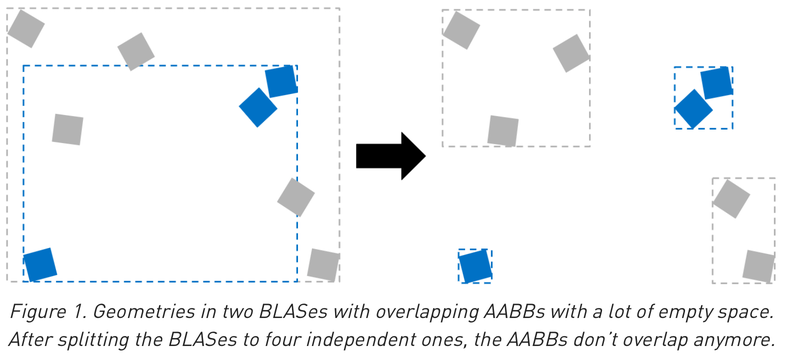
Optimization : deciding where to draw lines between:
- structure and solid (IAS and GAS)
- solids within GAS (bbox choice to minimize traversal intersection tests)
Where those lines are drawn defines the AS
https://developer.nvidia.com/blog/best-practices-using-nvidia-rtx-ray-tracing/
Optimizing Geometry : Merge BLAS when lots of overlaps
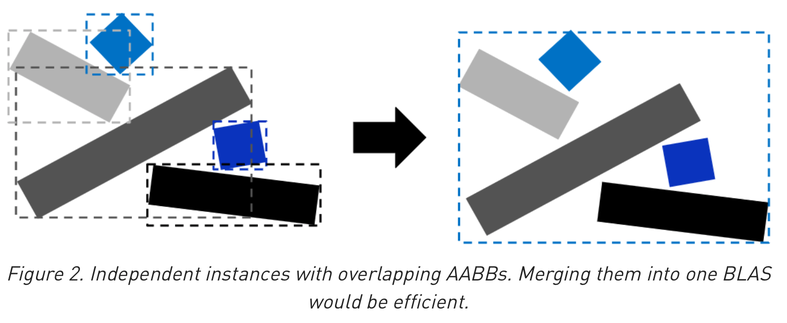
- lots of overlapping forces lots of intersections to find closest
- but too few bbox means the AS cannot help to avoid intersect tests
- balance required : needs experimentation and measurement to optimize
https://developer.nvidia.com/blog/best-practices-using-nvidia-rtx-ray-tracing/
Ray Intersection with Transformed Object -> Geometry Instancing
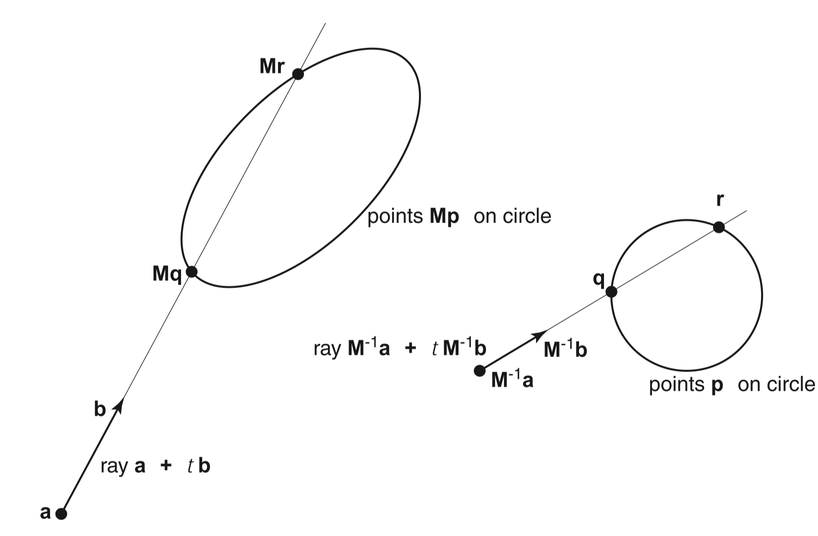
Fig 13.5 "Realistic Ray Tracing", Peter Shirley
Advantages apply equally to acceleration structures
Equivalent Intersects -> same t
- ray with ellipsoid : M*p
- M-1 ray with sphere : p
Local Frame Advantages
- simpler intersect (sphere vs ellipsoid)
- closer to origin -> better precision
Geometry Instancing Advantages
- many objects share local geometry
- orient+position with 4x4 M
- huge VRAM saving, less to copy
Requirements
- must not normalize ray direction
- normals transform differently
- N' = N * M-1T
- (due to non-uniform scaling)
OpenGL Instancing 2
OpenGL Mesh Instancing
- Minimize GPU VRAM used for geometry
- Local frame mesh verts/indices once
- 4x4 transforms for each instance
OptiX Instancing
OptiX Ray Traced Instancing
- Minimize GPU VRAM used for geometry
- Local frame CSG node tree once
- 4x4 transforms for each instance
G4VSolid -> CUDA Intersect Functions for ~10 Primitives
- 3D parametric ray : ray(x,y,z;t) = rayOrigin + t * rayDirection
- implicit equation of primitive : f(x,y,z) = 0
- -> polynomial in t , roots: t > t_min -> intersection positions + surface normals
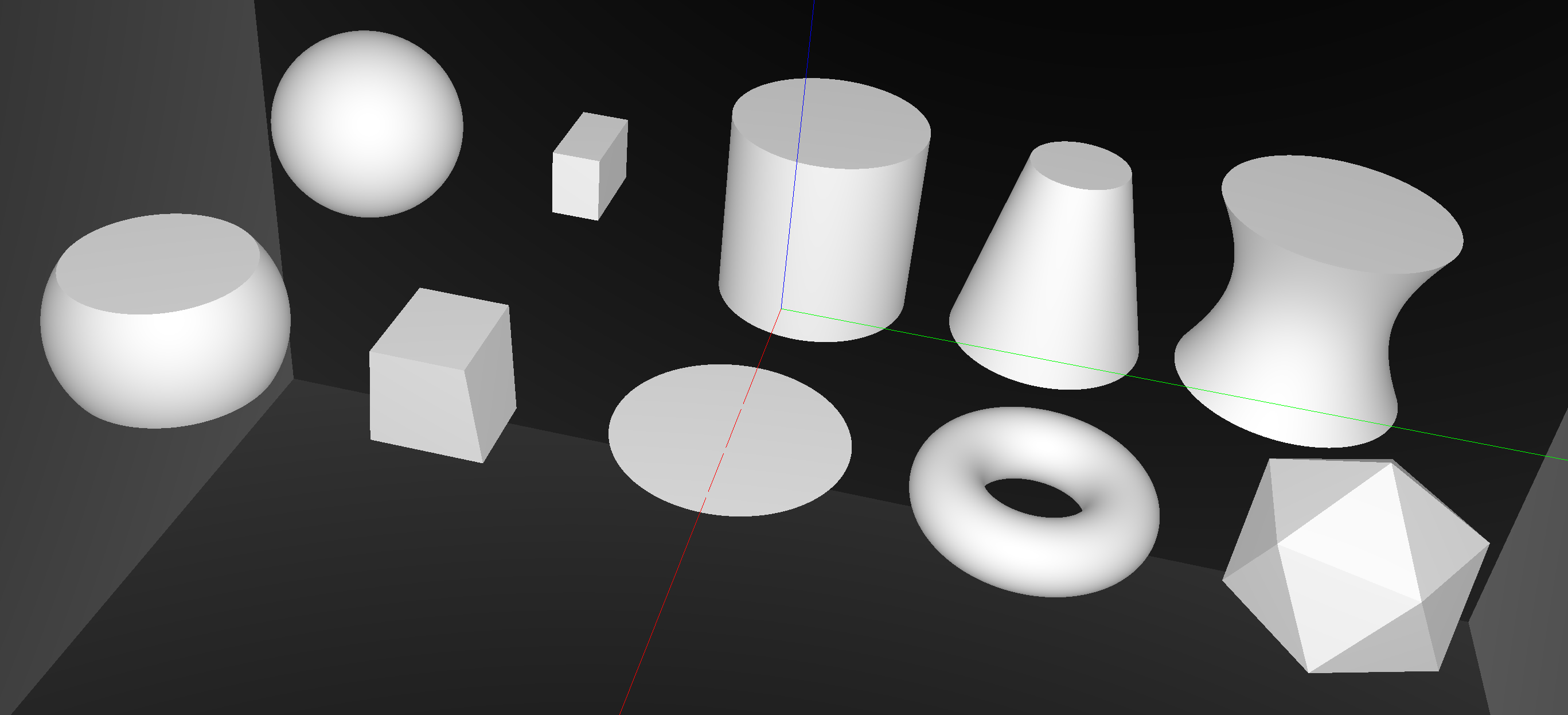
Sphere, Cylinder, Disc, Cone, Convex Polyhedron, Hyperboloid, Torus, ...
intersect_analytic.cu : for all shapes/concatenated-shapes/primitives
Shapes from buffer content:
- primBuffer
- offsets into part, tran, plan buffers
- partBuffer
- nodes of the CSG tree (operators+primitives)
- tranBuffer
- transforms of CSG nodes (instance local frame)
- planBuffer
- planes
- identityBuffer
- volume identity uint4 (including boundary)
Populated from GMergedMesh
OptiXRap/cu/intersect_analytic.cu
- concatenated shapes, called for each primIdx
425 RT_PROGRAM void intersect(int primIdx)
426 {
427 const Prim& prim = primBuffer[primIdx];
428
429 unsigned partOffset = prim.partOffset() ;
430 unsigned numParts = prim.numParts() ;
431 unsigned primFlag = prim.primFlag() ;
432
433 if(primFlag == CSG_FLAGNODETREE)
434 {
435 evaluative_csg( prim, primIdx );
436 }
474 }
229 RT_PROGRAM void bounds (int primIdx, float result[6])
230 {
251 optix::Aabb* aabb = (optix::Aabb*)result;
252 *aabb = optix::Aabb();
253
254 uint4 identity =
identityBuffer[instance_index*primitive_count+primIdx] ;
...
271 const Prim& prim = primBuffer[primIdx];
...
294 if(primFlag == CSG_FLAGNODETREE || primFlag == CSG_FLAGINVISIBLE )
295 {
301 csg_bounds_prim(primIdx, prim, aabb);
318 }
385 }
https://bitbucket.org/simoncblyth/opticks/src/master/optixrap/cu/intersect_analytic.cu
G4Boolean -> CUDA/OptiX Intersection Program Implementing CSG
Outside/Inside Unions
dot(normal,rayDir) -> Enter/Exit
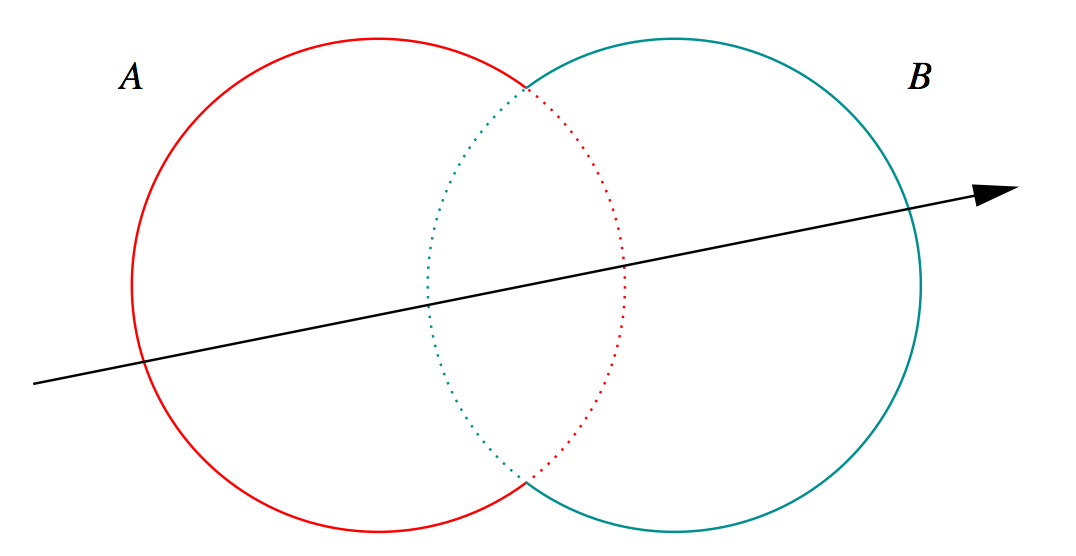
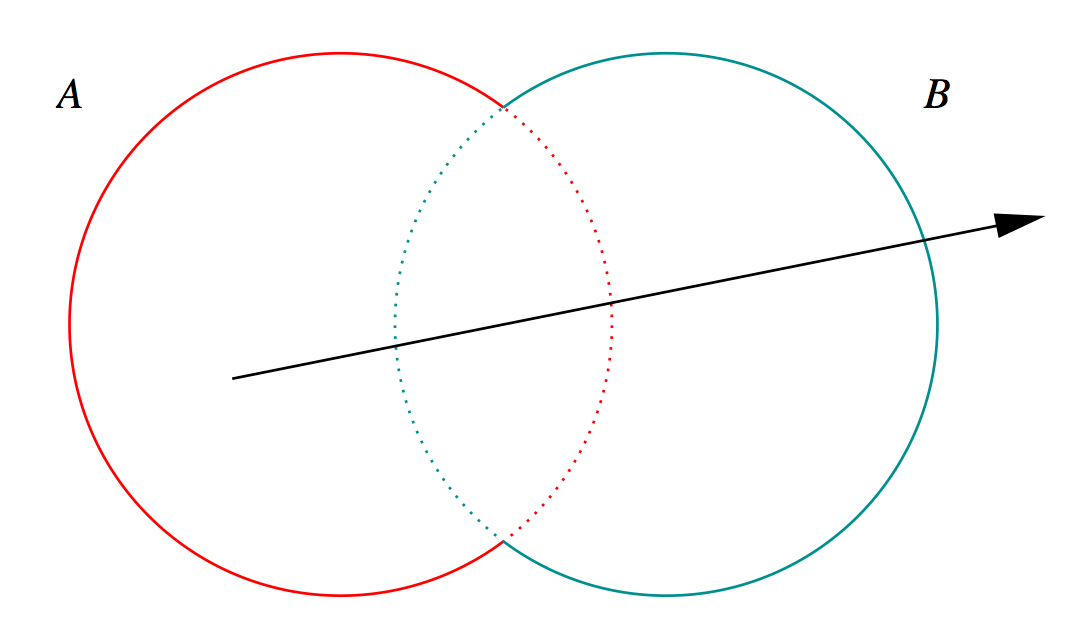
- A + B boundary not inside other
- A * B boundary inside other
Complete Binary Tree, pick between pairs of nearest intersects:
| UNION tA < tB | Enter B | Exit B | Miss B |
|---|---|---|---|
| Enter A | ReturnA | LoopA | ReturnA |
| Exit A | ReturnA | ReturnB | ReturnA |
| Miss A | ReturnB | ReturnB | ReturnMiss |
- Nearest hit intersect algorithm [1] avoids state
- sometimes Loop : advance t_min , re-intersect both
- classification shows if inside/outside
- Evaluative [2] implementation emulates recursion:
- recursion not allowed in OptiX intersect programs
- bit twiddle traversal of complete binary tree
- stacks of postorder slices and intersects
- Identical geometry to Geant4
- solving the same polynomials
- near perfect intersection match
- [1] Ray Tracing CSG Objects Using Single Hit Intersections, Andrew Kensler (2006)
- with corrections by author of XRT Raytracer http://xrt.wikidot.com/doc:csg
- [2] https://bitbucket.org/simoncblyth/opticks/src/tip/optixrap/cu/csg_intersect_boolean.h
- Similar to binary expression tree evaluation using postorder traverse.
Opticks : Translates G4 Geometry to GPU, Without Approximation
Materials/Surfaces -> GPU Texture
Material/Surface/Scintillator properties
- interpolated to standard wavelength domain
- interleaved into "boundary" texture
- "reemission" texture for wavelength generation
Material/surface boundary : 4 indices
- outer material (parent)
- outer surface (inward photons, parent -> self)
- inner surface (outward photons, self -> parent)
- inner material (self)
Primitives labelled with unique boundary index
- ray primitive intersection -> boundary index
- texture lookup -> material/surface properties
simple/fast properties + reemission wavelength
G4 Structure Tree -> Instance+Global Arrays -> OptiX
Group structure into repeated instances + global remainder:
- auto-identify repeated geometry with "progeny digests"
- JUNO : 5 distinct instances + 1 global
- instance transforms used in OptiX/OpenGL geometry
instancing -> huge memory savings for JUNO PMTs
j1808_top_rtx
j1808_top_ogl
Opticks Analytic Daya Bay Near Site, GPU Raytrace (3)
Opticks Analytic Daya Bay Near Site, GPU Raytrace (1)
scan-pf-1_Opticks_vs_Geant4 2
| JUNO analytic, 400M photons from center | Speedup | |
|---|---|---|
| Geant4 Extrap. | 95,600 s (26 hrs) | |
| Opticks RTX ON (i) | 58 s | 1650x |
Useful Speedup > 1500x : But Why Not Giga Rays/s ? (1 Photon ~10 Rays)
100M photon RTX times, avg of 10
| Launch times for various geometries | |||
|---|---|---|---|
| Geometry | Launch (s) | Giga Rays/s | Relative to ana |
| JUNO ana | 13.2 | 0.07 | |
| JUNO tri.sw | 6.9 | 0.14 | 1.9x |
| JUNO tri.hw | 2.2 | 0.45 | 6.0x |
| Boxtest ana | 0.59 | 1.7 | |
| Boxtest tri.sw | 0.62 | 1.6 | |
| Boxtest tri.hw | 0.30 | 3.3 | 1.9x |
- ana : Opticks analytic CSG (SM)
- tri.sw : software triangle intersect (SM)
- tri.hw : hardware triangle intersect (RT)
JUNO 15k triangles, 132M without instancing
Simple Boxtest geometry gets into ballpark
- NVIDIA claim : 10 Giga Rays/s with RT Core
- -> 1 Billion photons per second
- RT cores : built-in triangle intersect + 1-level of instancing
- flatten scene model to avoid SM<->RT roundtrips ?
OptiX Performance Tools and Tricks, David Hart, NVIDIA https://developer.nvidia.com/siggraph/2019/video/sig915-vid
Summary : Opticks Detector Geometry
GPU : Geometry Rethink Mandatory
- ray tracing APIs -> simple 2-level hierarchy
- rethink amply rewarded
Opticks > 1500x Geant4 (one Turing GPU)

Opticks : state-of-the-art GPU ray tracing applied to optical photon simulation and integrated with Geant4, giving a leap in performance that eliminates memory and time bottlenecks.

- Drastic speedup -> better detector understanding -> greater precision
- any simulation limited by optical photons can benefit
- more photon limited -> more overall speedup (99% -> 100x)

| https://bitbucket.org/simoncblyth/opticks | code repository |
| https://simoncblyth.bitbucket.io | presentations and videos |
| https://groups.io/g/opticks | forum/mailing list archive |
| email:opticks+subscribe@groups.io | subscribe to mailing list |
Constructive Solid Geometry (CSG) : Shapes defined "by construction"
CSG Binary Tree
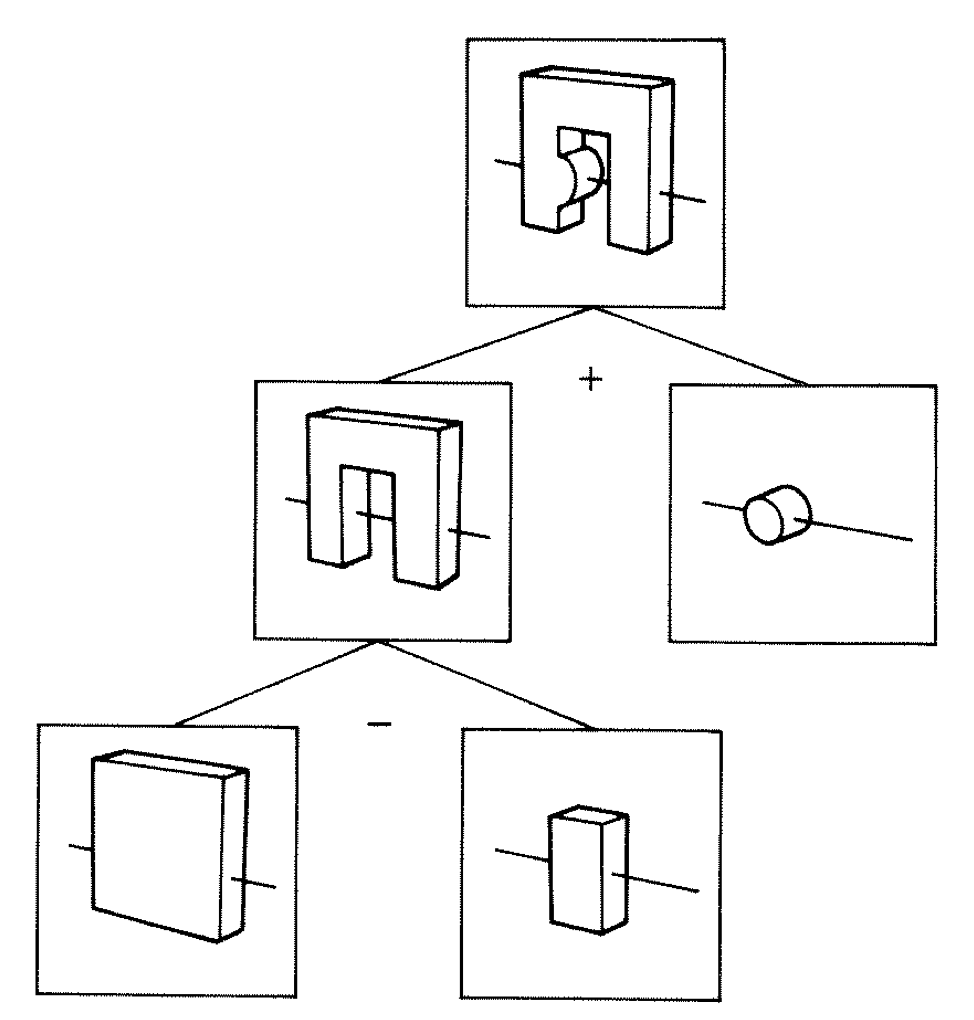
Primitives combined via binary operators
Simple by construction definition, implicit geometry.
- A, B implicit primitive solids
- A + B : union (OR)
- A * B : intersection (AND)
- A - B : difference (AND NOT)
- !B : complement (NOT) (inside <-> outside)
CSG expressions
- non-unique: A - B == A * !B
- represented by binary tree, primitives at leaves
3D Parametric Ray : ray(t) = r0 + t rDir
Ray Geometry Intersection
- primitive : find t roots of implicit eqn
- composite : pick primitive intersect, depending on CSG tree
How to pick exactly ?
CSG : Which primitive intersect to pick ?
In/On/Out transitions
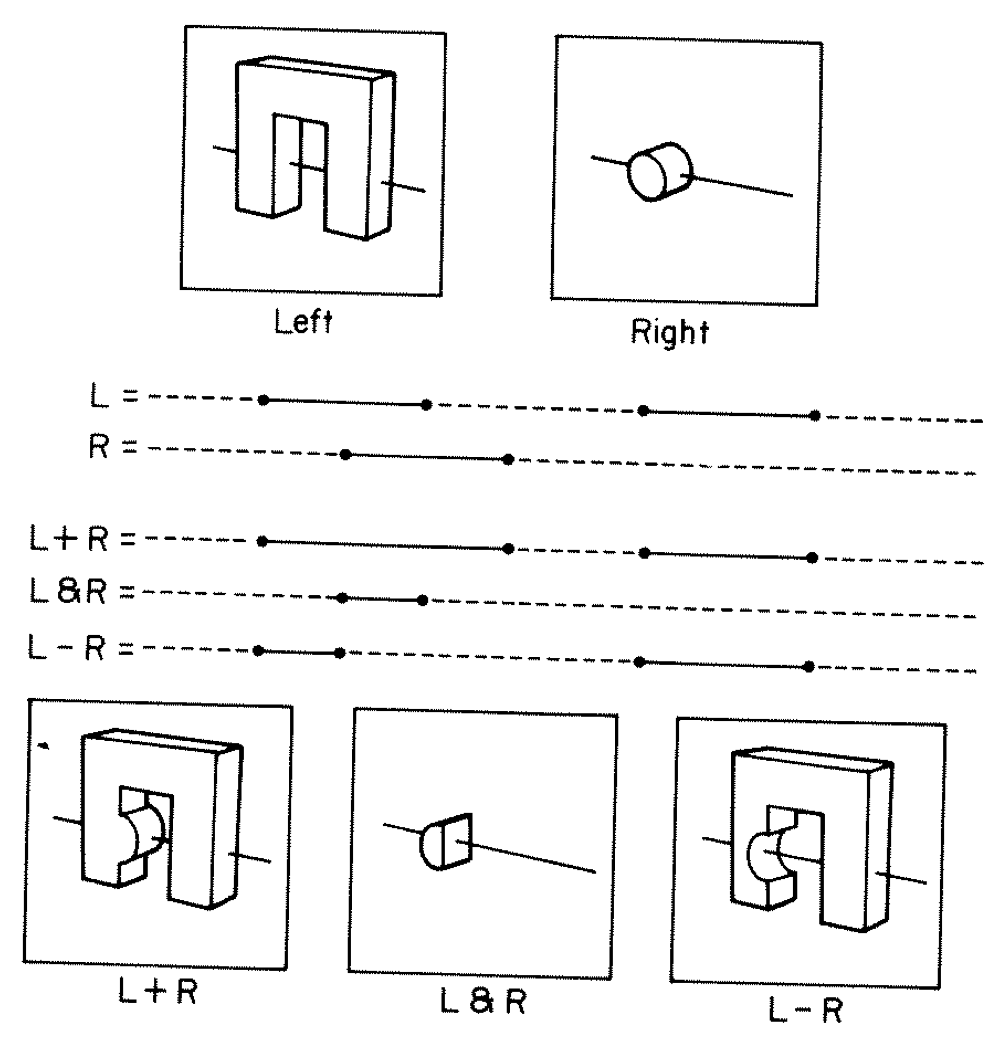
Classical Roth diagram approach
- find all ray/primitive intersects
- recursively combine inside intervals using CSG operator
- works from leaves upwards
Computational requirements:
- find all intersects, store them, order them
- recursive traverse
BUT : High performance on GPU requires:
- massive parallelism -> more the merrier
- low register usage -> keep it simple
- small stack size -> avoid recursion
Classical approach not appropriate on GPU
CSG Complete Binary Tree Serialization -> simplifies GPU side
Bit Twiddling Navigation
- parent(i) = i/2 = i >> 1
- leftchild(i) = 2*i = i << 1
- rightchild(i) = 2*i + 1 = (i << 1) + 1
- leftmost(height) = 1 << height
Geant4 solid -> CSG binary tree (leaf primitives, non-leaf operators, 4x4 transforms on any node)
Serialize to complete binary tree buffer:
- no need to deserialize, no child/parent pointers
- bit twiddling navigation avoids recursion
- simple approach profits from small size of binary trees
- BUT: very inefficient when unbalanced
Height 3 complete binary tree with level order indices:
depth elevation
1 0 3
10 11 1 2
100 101 110 111 2 1
1000 1001 1010 1011 1100 1101 1110 1111 3 0
postorder_next(i,elevation) = i & 1 ? i >> 1 : (i << elevation) + (1 << elevation) ; // from pattern of bits
Postorder tree traverse visits all nodes, starting from leftmost, such that children are visited prior to their parents.
Evaluative CSG intersection Pseudocode : recursion emulated
fullTree = PACK( 1 << height, 1 >> 1 ) // leftmost, parent_of_root(=0) tranche.push(fullTree, ray.tmin) while (!tranche.empty) // stack of begin/end indices { begin, end, tmin <- tranche.pop ; node <- begin ; while( node != end ) // over tranche of postorder traversal { elevation = height - TREE_DEPTH(node) ; if(is_primitive(node)){ isect <- intersect_primitive(node, tmin) ; csg.push(isect) } else{ i_left, i_right = csg.pop, csg.pop // csg stack of intersect normals, t l_state = CLASSIFY(i_left, ray.direction, tmin) r_state = CLASSIFY(i_right, ray.direction, tmin) action = LUT(operator(node), leftIsCloser)(l_state, r_state) if( action is ReturnLeft/Right) csg.push(i_left or i_right) else if( action is LoopLeft/Right) { left = 2*node ; right = 2*node + 1 ; endTranche = PACK( node, end ); leftTranche = PACK( left << (elevation-1), right << (elevation-1) ) rightTranche = PACK( right << (elevation-1), node ) loopTranche = action ? leftTranche : rightTranche tranche.push(endTranche, tmin) tranche.push(loopTranche, tminAdvanced ) // subtree re-traversal with changed tmin break ; // to next tranche } } node <- postorder_next(node, elevation) // bit twiddling postorder } } isect = csg.pop(); // winning intersect
https://bitbucket.org/simoncblyth/opticks/src/tip/optixrap/cu/csg_intersect_boolean.h
CSG Deep Tree : JUNO "fastener"
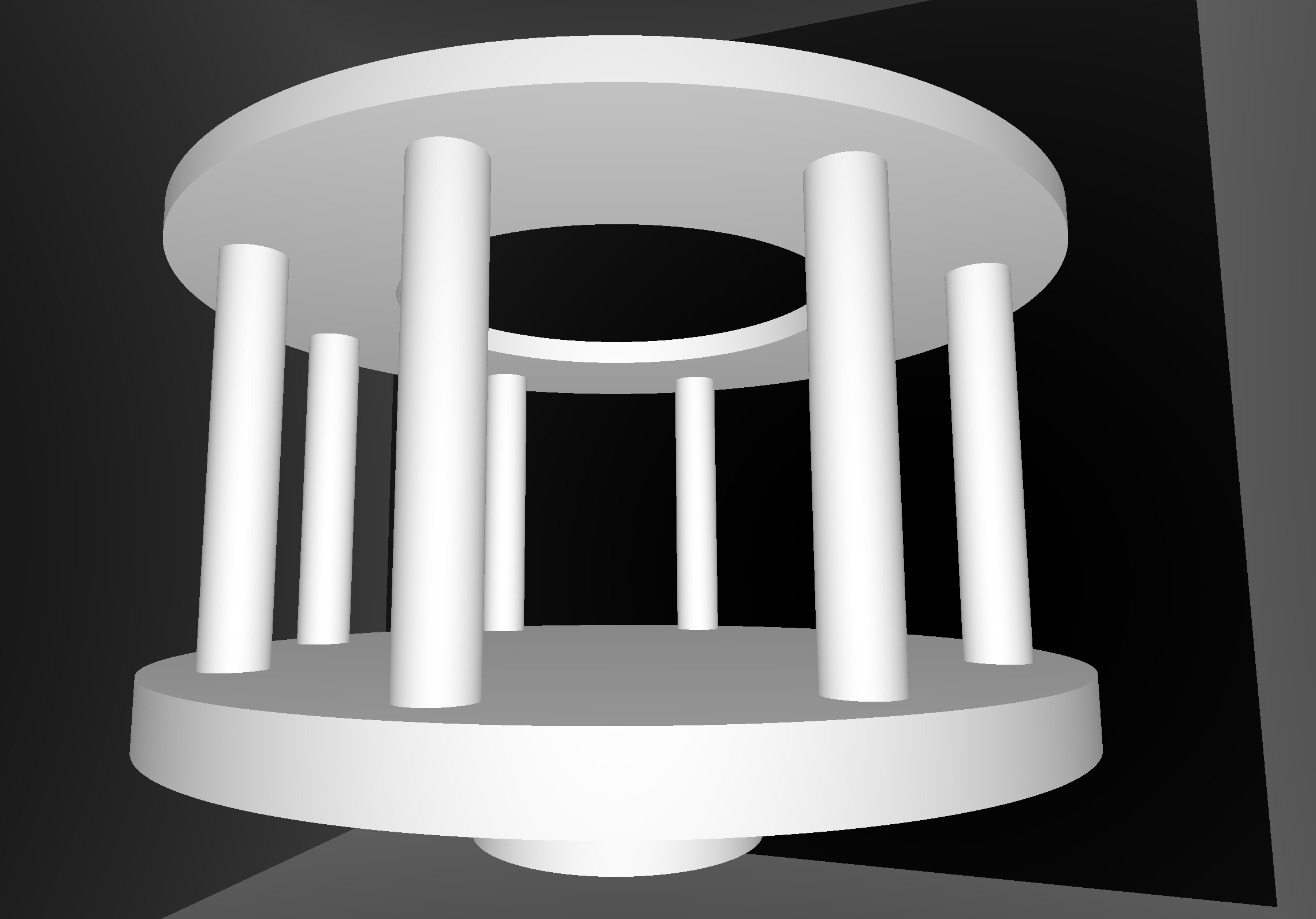
CSG Deep Tree : height 11 before balancing, too deep for GPU raytrace
NTreeAnalyse height 11 count 25 ( un : union, cy : cylinder, di : difference )
un
un di
un cy cy cy
un cy
un cy
un cy
un cy
un cy
un cy
un cy
di cy
cy cy
CSG trees are non-unique
- many possible expressions of same shape
- some much more efficiently represented as complete binary trees
CSG Deep Tree : Positivize tree using De Morgan's laws
Positive form CSG Trees
Apply deMorgan pushing negations down tree
- A - B -> A * !B
- !(A*B) -> !A + !B
- !(A+B) -> !A * !B
- !(A - B) -> !(A*!B) -> !A + B
End with only UNION, INTERSECT operators, and some complemented leaves.
COMMUTATIVE -> easily rearranged
1st step to allow balancing : Positivize : remove CSG difference di operators
... ...
un cy
un cy
un cy
un cy
un cy
di cy
cy cy
... ...
un cy
un cy
un cy
un cy
un cy
in cy
cy !cy
CSG Deep Tree : height 4 after balancing, OK for GPU raytrace
NTreeAnalyse height 4 count 25
un
un un
un un un in
un un un un cy in cy !cy
cy cy cy cy cy cy cy cy cy !cy
un : union, in : intersect, cy : cylinder, !cy : complemented cylinder
Balancing positive tree:
- classify tree operators and their placement
- mono-operator trees can easily be rearranged as union un and intersection in operators are commutative
- mono-operator above bileaf level can also easily be rearranged as the bileaf can be split off and combined
- create complete binary tree of appropriate size filled with placeholders
- populate the tree replacing placeholders
- prune (pull primitives up to avoid placeholder pairings)
Not a general balancer : but succeeds with all CSG solid trees from Daya Bay and JUNO so far
https://bitbucket.org/simoncblyth/opticks/src/default/npy/NTreeBalance.cpp
CSG Examples
Torus : much more difficult/expensive than other primitives
Torus artifacts


3D parametric ray : ray(x,y,z;t) = rayOrigin + t * rayDirection
- ray-torus intersection -> solve quartic polynomial in t
- A t^4 + B t^3 + C t^2 + D t + E = 0
High order equation
- very large difference between coefficients
- varying ray -> wide range of very coefficients
- numerically problematic, requires double precision
- several mathematical approaches used, work in progress
Best Solution : replace torus
- eg model PMT neck with hyperboloid, not cylinder-torus
Torus : different artifacts as change implementation/params/viewpoint
- Only use Torus when there is no alternative
- especially avoid CSG combinations with Torus
